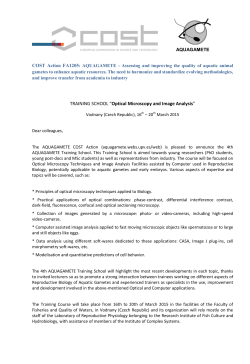
OP ART: OPTICAL ILLUSIONS Lesson Steps 4th Grade- Line
T H E A RT O F E D U C AT I O N OP ART: OPTICAL ILLUSIONS 4th Grade- Line Lesson Steps Step 1 - Demonstration Show students the basics of starting an optical illusion. When you change the shape or change the pattern, an illusion will result. Give students a handout with a variety of background options. STUDENT EXAMPLE OBJECTIVE Students will use lines to create an optical illusion that tricks the eye. Ma t er i al s • • • • • White construction paper 12x12 Sharpie markers Ruler and Compass Variety of shapes to trace Erasers Step 2 - Background Choose a pattern for your background. You could do stripes, a checkerboard, zig zag, etc. It is your choice, but the background should cover the entire paper. Map this out in pencil first. Step 3 - Shapes Choose 2 or more shapes to layer over the top of your background. The pattern inside the shape must be different from the background pattern. Make your marks in pencil first. M o t i v a t io n Step 4 - Labeling • Show students examples of Op Art, such as works by Victor Vasarely from the 1960ʼs. Label using an X or small line every other section in both your background and shapes. The areas with a mark will get colored in black. The areas without will stay white. Its important to label because this will prevent any mistakes when you start in permanent marker. • The goal of Op Art was to fool or trick the eye by combining and layering different shapes, patterns and lines. • The colors that are most often used in Op Art are black and white, although other colors can be used. • Where have you seen optical illusions in your everyday life? Step 5 - Sharpie Using a black permanent marker, carefully color in all of the sections you marked in pencil. If there are mistakes along the way, whiteout works great. The goal of this is to trick the eye. Hold your paper back for a neighbor. Does it fool their eye or make them dizzy? Did you change pattern each time you created a new shape?
© Copyright 2025





















